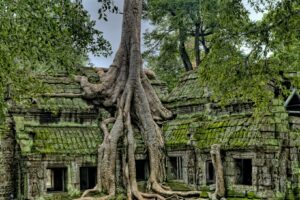Travel back in time to explore the captivating tapestry of the ancient world. From the majestic pyramids of Egypt to the grandeur of the Roman Empire, ancient civilizations have left an indelible mark on history. Delving into the annals of time reveals the remarkable achievements, cultural richness, and enduring legacies of these early societies.
The History Of The Ancient World
Exploring ancient civilizations sheds light on the diverse cultures and achievements of societies long past. From Mesopotamia to the Nile River Valley and the Indus Valley, the remnants of these early civilizations offer valuable insights into our shared human history.
 Mesopotamia: Cradle of Civilization
Mesopotamia: Cradle of Civilization
Mesopotamia, meaning “between the rivers,” refers to the fertile land between the Tigris and Euphrates rivers. This region, encompassing modern-day Iraq, Kuwait, and parts of Syria and Iran, is known as the Cradle of Civilization. It gave birth to the world’s first known writing system, cuneiform, as well as the Code of Hammurabi, one of the earliest legal codes. Mesopotamia’s contributions to mathematics, astronomy, and architecture have left an indelible mark on human development.
The Nile River Valley: Land of the Pharaohs
The Nile River Valley, particularly ancient Egypt, stands out as one of the most iconic civilizations in history. The ancient Egyptians built monumental structures like the pyramids at Giza, developed a sophisticated writing system known as hieroglyphics, and excelled in various fields such as medicine, engineering, and art. The Nile River, with its annual flooding, brought prosperity to the region, enabling the growth of a powerful and enduring civilization that continues to fascinate archaeologists and historians.
Indus Valley Civilization: Ancient City Planning
The ancient Indus Valley Civilization, located in present-day Pakistan and northwest India, boasts remarkable urban planning and advanced engineering for its time. Cities like Mohenjo-Daro and Harappa exemplify meticulous urban layouts with well-organized streets, brick houses, and an efficient drainage system. The civilization’s mastery of trade, arts, and crafts, as evidenced by intricately designed seals and pottery, showcases a sophisticated society that thrived along the banks of the Indus River.
Legacy of Ancient Cultures 
The legacy of ancient cultures, such as Mesopotamia, the Nile River Valley, and the Indus Valley Civilization, continues to shape modern society in various ways. These civilizations made significant contributions to human development in areas ranging from governance to art and architecture. Let’s explore how their enduring legacies have influenced and inspired generations throughout history.
Mesopotamia:
Mesopotamia, often referred to as the Cradle of Civilization, laid the foundation for many essential aspects of society that we still rely on today. Its invention of writing systems, such as cuneiform, revolutionized communication and record-keeping. Additionally, the development of the earliest known legal code, the Code of Hammurabi, established principles of justice that resonate in legal systems globally. Mesopotamia’s contributions in mathematics, astronomy, and agriculture have also left a lasting impact on human progress.
Nile River Valley:
The Nile River Valley’s ancient civilizations, particularly the Egyptians, left behind a rich cultural and architectural heritage. Their monumental structures, including the pyramids and temples, stand as testaments to their advanced engineering and architectural prowess. The sophisticated hieroglyphic writing system, along with papyrus scrolls for documentation, showcased their intellectual achievements. The Egyptians’ belief in the afterlife and intricate burial practices have fascinated historians and archaeologists for centuries, offering insights into their spiritual and funerary customs.
 Indus Valley Civilization:
Indus Valley Civilization:
The Indus Valley Civilization, one of the oldest urban civilizations, excelled in town planning and trade networks. Their well-organized cities, with advanced drainage systems and grid layouts, reflect a sophisticated understanding of urban living. The evidence of long-distance trade with Mesopotamia and Egypt demonstrates their economic prowess and cultural exchanges. The intricate seals and artifacts discovered from this civilization reveal a unique artistic flair and craftsmanship that influence contemporary art forms.
Achaemenid Dynasty:
The Achaemenid Dynasty, founded by Cyrus the Great, heralded a new era of governance and territorial expansion in the ancient world. Under Darius the Great, the empire reached its zenith, covering vast territories from the Aegean Sea to the Indus River. Administrative innovations, such as standardized coinage and a complex system of satrapies, ensured efficient governance across diverse regions. Despite its eventual decline and conquest by Alexander the Great, the Achaemenid Dynasty’s architectural marvels, such as Persepolis, and enduring influence on subsequent empires solidify its legacy in ancient history.
The lasting legacies of these ancient cultures serve as a reminder of their resilience, innovation, and enduring impact on human civilization. From legal systems to architectural marvels, their contributions continue to shape our understanding of the past and inspire future generations.



